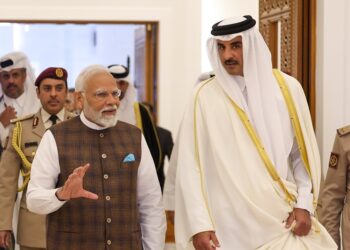Abstract
Rising from the Global South, India has grown as a global power while becoming a predominant figure in international mediation. Increasingly, drawing on its historical policy of non-alignment and relatively robust democratic institutions as well as growing economic power, India has become a self-styled neutral player in various international conflicts and discussions. By taking advantage of its neutrality and extensive diplomatic relations, India has established itself as a major player in advancing peace and stability across different regions. But this comes with innumerable challenges, be it internal or external which might hinder India’s image while striving on this path. This paper provides an insight into India’s New role as the world’s mediator, a historical overview, and the recent attempts at mediation by India as a predominant voice of World Peace.
Keywords: India, Mediation, Global south, World peace
Introduction
“Mediation is a process whereby a third party assists two or more parties, with their consent, to prevent, manage, or resolve a conflict by helping them to develop mutually acceptable agreements”. It is one of the most important medium for resolving various conflicts in an increasingly interconnected world. India’s willingness to take on the new role as a global mediator is noteworthy given its rising geopolitical influence and its history of non-alignment. Even during the Cold War when the world was divided into blocks India never aligned with either the US or USSR. After 1990 when India opened its economy through LPG reforms its worldwide influence increased and new alliances were formed with powerful nations which is an added advantage to India to have a say in international politics diplomatically without taking any sides.
India’s recent humanitarian efforts, be it supplying medical essentials to different countries in times of need or its stand in the Russia-Ukraine conflict and the Israel-Palestine conflict display its commitment towards peace outside its immediate area. This initiative demonstrates India’s commitment to multilateralism and increasing diplomatic clout. India’s rise as a global mediator is effective for the overall stability of the world as it promotes regional stability and promotes a peaceful and cooperative global order. However, Its internal and external problems as well as doubts regarding its impartiality in the minds of global citizens can be a hindrance for India to take on this new role.
International Mediation and Conflict Resolution
What is International Mediation?
As mentioned above “Mediation is a process whereby a third party assists two or more parties, with their consent, to prevent, manage, or resolve a conflict by helping them to develop mutually acceptable agreements”.Now the question arises, What is a conflict? According to Dr. Kenneth Cloke, “Conflict is the sound made by cracks in a system”. wherein a system can be organizational, material, or political. So mediation is nothing but repairing this crack and finding a solution to restore the system wherein all the parties are considered. A mediator, on the other hand, is a third party that assists or tries to assist the other two parties in coming to a consensus.
When we talk of international conflict resolution, there are various ways an international conflict can be resolved. The First can be a One-dimensional approach, wherein one party dominates the other party and comes to a solution per one’s own will without considering the other party’s demands. This approach is dictatorial. The Second approach can be called a Two-dimensional approach, wherein both parties have a say in the problem but ultimately one has to make a compromise to achieve peace. It is more of a debate, where one overpowers the other and ultimately wins. The third can be called a multidimensional problem-solving approach, where all parties know what they want and are ready to negotiate. It is a form of a dialogue between parties where each party has their say and they try to create a win-win situation. It is in this case that the role of mediator comes into play.
History of International Mediation and Instances of Successful Conflict Resolution.
Mediation as a concept has existed since ancient times. It is said that the first instances of mediation date back to Mesopotamia approx 4 to 5 thousand years ago. The modern concept of mediation came into the picture when the idea of a Nation-state emerged after the Treaty of Westphalia in 1648. The European system of States laid the foundation of Modern International Mediation. An example of one such successful mediation effort is between Portugal and Brazil in 1825 when Great Britain acted as a mediator. Another example of successful International mediation is the Treaty of Portsmouth (1905) signed between Russia and Japan which US President Theodore Roosevelt mediated or Camp David Accord of 1978 can be considered a few examples of successful mediation on the international stage. In the Indian context, the Tashkent Declaration signed between India and Pakistan on January 10, 1966, mediated by both the USSR and the USA can be an example of mediation at the International Stage.
Click Here To Download The Paper


📌Analysis of Bills and Acts
📌 Summary of Reports from Government Agencies
📌 Analysis of Election Manifestos

